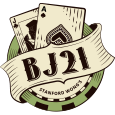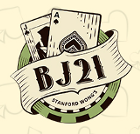6 to 5 Blackjack Payout

What is the 6 to 5 Blackjack rule?
Every break-in dealer fresh out of dealing school knows what a blackjack pays. You pay the player three chips for every two he or she wagered when their first two cards are an ace and any ten-value card. The student-dealer also knows that if you can’t figure out the payoff amount on unusual wagers the dealer just breaks the wager in half and cuts into halved chips three times. No sweat, right? But if you’re dealing on one of approximately 231 blackjack tables on the Las Vegas Strip (as of this writing), you would be over paying the customer. Why? Because the house rule dictates that the customer receives an alternative blackjack payoff amount of six chips for every five wagered (6:5). Of the twenty nine major gaming resorts located on the Las Vegas Strip, twenty five casinos offer 6:5 on blackjacks on at least one table, with at least six casino offering 6:5 on between fifteen and twenty five blackjack tables (Wong, 2006). Is the use of a blackjack payout that reduces blackjack payoffs to 6 to 5 increasing the game’s house advantage worth it for the casinos? Should every casino executive consider shifting to the 6:5 rule?
First, let’s look at the purpose of the 6:5 payoff and what it was designed to accomplish for the casino. Several years ago, Howard Grossman created and marketed a variation of traditional blackjack called “Super Fun 21”. Grossman’s desire was to create a blackjack game that was fun and interesting for the player, while providing the casino with a reasonable house advantage on a single deck game. As a past professional player, Grossman knew that casinos that offer a single deck game face a double edged sword; single deck games attracted more play since the customers believe they have a better chance playing against one deck, and the casino’s profit margin was extremely low on single deck games because the basic house advantage is close to breakeven (depending on game rules). By creating a game with different rules that offered different interesting blackjack payoffs while marginally increasing the house advantage of the single deck game, Grossman felt he had the answer to the single deck problem.
Unfortunately for Grossman, one of the major gaming corporations found his variation in blackjack payoffs interesting and decided to offer a blackjack payoff of 6 to 5 instead of Grossman’s payoff schedule, or the standard payoff of 3 to 2 (7.5 to 5). After calculating the difference between the two payoffs, the casino executives discovered their procedure change increased the house’s advantage on the single deck game by an astronomical 1.39%. Knowing that the 6:5 wasn’t part of Grossman’s patented Super Fun 21, some casinos decided to go with the 6:5 rule without incorporating any bonus payoffs or more liberal rules and created an extremely high house advantage games as compared to other traditional blackjack games.
As of this writing, plenty of 6:5 blackjack games populate the Las Vegas Strip. Of the 26 Strip gaming resorts, 22 offer single deck blackjack with the 6:5 rule; 4 locations also offer 6:5 on some of their double deck and six deck games. These locations combine for a total number of 231 blackjack games paying 6:5; almost 16% of all the blackjack games that line Las Vegas Boulevard. If you were to look at blackjack tables in other gaming locations throughout North America you would find an additional 247 games scattered throughout other areas of Las Vegas and Nevada, as well as venues in California, New Mexico, Washington, Iowa, Kansas, Michigan, Missouri, Mississippi and Atlantic City (see Table 1).
Table 1 – Regional Distribution of 6:5 Blackjack Games
|
LV Strip |
|||
|
LV Non-Strip |
|||
|
Reno/S. Lake Tahoe |
|||
|
Rural Nevada |
|||
|
Atlantic City |
|||
|
California |
|||
|
Mississippi |
|||
|
Iowa |
|||
|
Missouri |
|||
|
Washington |
|||
|
Kansas |
|||
|
Michigan |
|||
|
New Mexico |
Advantages and disadvantages of Instituting the 6:5 Rule
Face the facts. The advantage from instituting 6:5 payoff on blackjack in a single deck game is the increase in the games’ house advantage over the basic strategy player. By utilizing 6:5, the casino executive drives the house advantage from an average edge of 0.20% to the lofty total of 1.59%, almost 8 times as strong as the single deck game conditioned with the soft 17 rule. Some of the advantages are as follows:
- Paying 6:5 on a blackjack instead of paying 3:2 increases the natural house advantage by 1.39%
- Increases the single deck blackjack games house advantage (basic strategy) from 0.20% to 1.6% (depending on house rules)
- Since the average player adds approximately 0.8% to the houses’ advantage due to playing strategy mistakes, the 6:5 blackjack game is subject to an approximate house advantage of 2.2%
- The higher house advantage should increase the game’s hold percentage and win per unit significantly
- The higher house advantage should discourage professional blackjack players
- The percentage of hands where the player has a positive expectation is greatly diminished from 32.5% to 16.5% (single deck)
Based on standard blackjack game rules and the average players’ strategy mistakes, most multi-deck games are subject to a house advantage in the neighborhood of 1.0% to 1.3%. The 6:5 blackjack payoff variation creates a house edge that is approximately twice as strong as the multiple deck games, and places it in the category of several alternative casino games such as Pai Gow Poker (2.54%), Casino War (2.88%), and Red Dog’s basic bet (2.80%)(Cabot & Hannum, 2005). Using the 6:5 rule also terribly inhibits the skilled card counter. Normally, a single deck game requires a counter to spread one to three betting units to achieve a 1% advantage over the casino; however the counter gains the same advantage only when he spreads one to sixteen units, the same bet spread required of a standard six deck blackjack game dealt down to a deck and a half remaining.
Although all game metrics point to 6:5 as a positive substitute for 3:2, the rule variation does have its disadvantages. The first disadvantage situation is derived from the fact that the rule change is too strong a negative against the average players. Most rule changes in blackjack, such as hitting soft seventeen (0.20%) and restricting doubling to hands totaling ten and eleven only (0.26%), affect the game by “tenths” of a percent. The 6:5 rule affects the game by more then a full percentage point (1.39%). Second, most players expect to get paid three to two when they receive a blackjack. If they receive a 6:5 blackjack payout, they only need to go to other blackjack games, or games offered at a different casino to realize they aren’t receiving the full “standard” blackjack payoff. These disadvantages are as follows:
- Player that possess more than a basic game knowledge will stay away from the 6:5 games
- There already has been some backlash from players who feel they have been deceived into thinking the rule change adds value
There’s one more problem related to the 6:5 rule; players feel they are being deceived. Some casinos try to disguise the fact they are dealing 6:5 blackjack by using minimal table signage; other operators are promoting the fact they are offering very “juicy” single deck games that give the players a “whopping six to five payout” at blackjack (De Plume, 2003). In an effort to disguise the payout disadvantage, the casinos advertising “a whopping blackjack payout” created a message that insinuated that a 6:5 blackjack payout would actually benefit the customer. Their message: “The players are too stupid to know the difference.”
I’ve had several discussions with floor supervisors that work in Las Vegas Strip casinos who have noted a steady increase in “player backlash” to the 6:5 rule. Player reactions ranging from simply coloring up and leaving the tables, to outbursts of obscenities. Although a majority of the Las Vegas Strip casino players take the rule change in stride, it seems customers in outlying Las Vegas gaming saloons refuse to play the 6:5 single deck games. Several non-Strip casinos, after a reasonable trial period, have removed their single deck games using 6:5 from the casino floor because their primarily local customer base stopped wagering on the games. One casino executive from a Boulder Strip property that eliminated the 6:5 games commented that the 6:5 games’ cash drop was beginning to decline drastically, and many of their regular blackjack customers threatened to “take their business elsewhere.” “Players who get out of a taxi on the Strip don’t mind getting shorted on their blackjack payouts because they’re just happy to be gambling in Las Vegas”, stated the executive, “but players who live and play here look at it like some kind of bait-and-switch scheme.”
This player philosophy might just be true. Table 1 indicates that a majority of the games in Las Vegas seem to thrive on the Las Vegas Strip where they cater primarily to tourists (231 6:5 games, averaging of 10.5 tables per location), while non-Strip locations appear to have problems spreading many of these games on their casino floor (87 games, 4.8 tables per location). It is also important to note that most non-destination/resort gaming regions can’t support more then one or two tables per location. Atlantic City, which is categorized as a destination/resort region, is known for catering to some of the smartest gamblers in North America. It offers a limited number of 6:5 games per location (1.9). Based on this information, it’s safe to say that the less sophisticated gambler will tolerate receiving six dollars for every five dollars wagered, while the more experienced players will keep their distance while passing by the tables for other gaming alternatives.
Is the 6 to 5 rule worth it?
What about the casinos that are offering 6:5 blackjack to the public; are they receiving the benefits of the less popular but higher house advantage game? Is their rate of dollar return an indication that this rule variation is a good business decision? To answer these questions we need to look for gaming numbers in an attempt to either support or reject the statement that 6:5 blackjack creates an equitable return for the casinos. Since most casinos are not forthcoming with their revenue information (and rightly so), we need to examine results on a larger scale, primarily from a gaming area that supports a high number of 6:5 games. The prime location for this analysis with the greatest saturation of 6:5 games, is located on the Las Vegas Strip (Gaming Revenue Report, Las Vegas Strip, $1 Million in Revenue or Greater, 2006). As of this writing, the casinos located on the Strip provide the public with 231 6:5 games, which represent approximately 16% of all twenty-one games in this revenue reporting area, and provides excellent financial basis for our analysis.
To give us a good idea how valuable the 6:5 blackjack rule is for the casino, there are two revenue metrics that need to be examined:
- Effect on the win per day per unit (WPUPD) of all twenty-one games
- The effect on all twenty-one games calculated hold percentage
These numbers representative of the Las Vegas Strip are found in the Nevada Gaming Revenue Reports for the entire year of 2005 and several years prior to 2005, going back to the year 2000. It’s important that we go back to the year 2000 for two reasons. First, it examines a period where 6:5 games were not in existence as they are today. Second, the gambling destination of Las Vegas was subject to a horrific decrease in business due to the tragic events of September 11, 2001. Gaming revenue numbers were skewed for 2001 as well as 2002.
The first analysis is achieved utilizing the computed figure twenty-one games average of win per unit per day for the year of 2005 as compared to the same number computed from numbers recorded in the year 2000. In addition, to make the comparison more accurate, the WPDPU figure for 2000 was adjusted for inflation at an average rate of 2% per year. These numbers and the adjusted WPDPU are indicated in Table2.
Table 2 – Win per Day per Unit in Twenty-One Adjusted for Inflation
Based on the premise that 16% of all twenty one games are 6:5, the increase in actual house advantage is approximately 1% higher then the average twenty one game offered to the players, and that a majority of the 6:5 games cater to lower limit play, the theoretical increase in win per day per unit (WPDPU) should be at least 10% higher then the 2000 WPDPU benchmark after it has been adjusted for inflation. Based on this assumption the WPDPU for 2005 should be in the area of $1,626; however the actual figure is $1,564 or approximately $62 less then the expected estimate. If 6:5 is effective in increasing blackjack revenue for the casino, why didn’t the Strip twenty-one games WPDPU increase to the calculated projections?
Sidebar – Formula for Calculating WPDPU Estimates for 6:5
The WPDPU increase is estimated by taking the different between the calculated house advantage for 6:5 of 2.2% (including estimated effect of player mistakes) and an estimated average advantage on any twenty-one games located on the Las Vegas Strip of 1.0%. This percentage is further adjusted to reflect the percentage of 6:5 games in this category (16%) and the fact that these games are probably subject to low limits and a lower average bet than the average game type (weighted by a factor of 50%) .
120% X 16% X 50% = 10%
The adjusted difference in win is converted from percentage to decimal and added to “1” to achieve a useable multiplier (1.1). The multiplier number is next used in to multiple the year 2000 WPDPU number (adjusted for inflation) and a 2005 “6:5 blackjack effect” projection is estimated ($1,626).
1 + 10% = 1.1 X $1,484 = $1,626
This number could be conservative since the adjustment for lower average wagering (50%) is an arbitrary figure and could be slightly higher (55-60%). In addition, there has been a reduction of the number of blackjack tables per location since the year 2000. A reduction in twenty-one tables will reduce the “dead game” dilution factor and might inadvertently increase the year 2005 WPDPU.
Next let’s examine the Las Vegas Strip twenty-one game’s hold percentage over the past several years and see if we can glean some more information by analyzing these percentages since the year 2000 (Table 3).
Table 3 – Change in Hold Percentage in Twenty One Games LV Strip
|
Year |
2000 |
2001 |
2002 |
2003 |
2004 |
2005 |
|
Units (average) |
1,512 |
1,495 |
1,425 |
1,439 |
1,442 |
1,487 |
|
Win (000) |
744,634 |
745,392 |
693,722 |
731,313 |
805,045 |
848,692 |
|
WPDPU |
1,349 |
1,366 |
1,334 |
1,392 |
1,530 |
1,564 |
|
Hold |
11.6% |
12.1% |
12.1% |
12.2% |
11.6% |
10.8% |
If 16% of all Las Vegas Strip twenty-one games should hold approximately 14 percentage points greater then the established norm (see Table 4), shouldn’t the hold percentage on the Las Vegas Strip be increasing over the last several years instead of decreasing? Based on an average hold percentage from 2000 through 2004 of 11.9%, the effect of the increase in house advantage should conservatively drive twenty-one game hold percentages for 2005 to 13%. Granted, many factors other than house advantage contribute to a normal fluctuation of the related hold percentage, but isn’t it a logical assumption that the hold percentage should, at the very least, maintain at par performance with previous years’ average of 11.9%?
Table 4 – Increase in Theoretical Hold Percentage
|
Buy-In |
||
|
Average Wager |
||
|
Est. h/a |
||
|
Hands Played Hr |
||
|
Hours Played |
||
|
Theoretical Win |
||
|
Theoretical Hold % |
Conclusion
Review of the previous facts would lead the knowledgeable casino executive to conclude that the institution of 6:5 blackjack will have a better chance of successfully increasing the casino’s win per day per unit and the hold percentage of their twenty-one games if a majority of the customer demographic is limited in their gambling sophistication. This type of customer base is conducive with destination/resort type regions such as Las Vegas, Reno, and Lake Tahoe. Even when using 6:5 single deck games in tourist type gambler areas, it may be prudent that the casino executive commit to closely monitoring the performance and appeal of these games in order to mitigate possible risks from player backlash and the beginning of diminishing revenue returns.
Gaming operators in areas that rely on locally based customers who participate in casino gambling on a more consistent basis might be wise to steer clear of this blackjack rule variation, or at least limit the game’s exposure to one or two games. A review of Table 1 illustrates a lack of noticeable player appeal in non-destination/resort areas. A majority of the casinos in these regions either offer only a few 6:5 games or no 6:5 games whatsoever.
If your casino offers 6:5 blackjack games or is considering offering this rule variation, you may wish to consider the following suggestions:
- Use proper signage on the games to let the customers know they are receiving 6 to 5 on blackjack. Its been reported that some players don’t realize the change in the payout when they first sit down at the table and become upset when they eventually figure out their being short-paid as compared to what is considered “the normal standard” of 3:2.
- Instruct dealers and floor persons on how to handle questions regarding the 6:5 rule. It is my understanding that many of the Las Vegas Strip casinos have no established policy about how to correctly handle this situation. Forethought regarding customer inquires may prevent future public relation problems.
- Be prepared for the eventual backlash from the 6:5 blackjack rule. Players will eventually figure out that the great single deck games they have always heard about have been relegated to the category of carnival games like Red Dog and Casino War. Be prepared to remove these games if and when the players’ preference changes.
- If your casino offers 6:5 blackjack games in an area where other casinos also possess a good number of these games, you may consider replacing the 6:5 games with double and six deck games paying 3:2, and advertise in great big letters on your casino’s marquee, “ALL BLACKJACKS PAY 3:2.”
References
Author unknown (2006). Gaming Revenue Report, 2000-2005. Carson City: Nevada State publications.
Cabot, Anthony; Hannum, Robert (2005). Casino Math; 2 nd Edition. Reno: Trace Publications.
De Plum, Jean (2003). Why 6 to 5 Blackjack Sucks. E-zine articles. www.ezinearticles.com/?Why-6-to-5-Blackjack-Sucks&id=182970
Haney, Jeff (2003). Taking a hit: New blackjack odds further tilt advantage toward the house. Article written for the Las Vegas Sun Newspaper. Las Vegas: Las Vegas Sun.
Wong, Stanford (2006). Current Blackjack News, May 2006. Las Vegas: Pi Yee Press.
|
LV Strip |
|||
|
LV Non-Strip |
|||
|
Reno/S. Lake Tahoe |
|||
|
Rural Nevada |
|||
|
Atlantic City |
|||
|
California |
|||
|
Mississippi |
|||
|
Iowa |
|||
|
Missouri |
|||
|
Washington |
|||
|
Kansas |
|||
|
Michigan |
|||
|
New Mexico |
- Paying 6:5 on a blackjack instead of paying 3:2 increases the natural house advantage by 1.39%
- Increases the single deck blackjack games house advantage (basic strategy) from 0.20% to 1.6% (depending on house rules)
- Since the average player adds approximately 0.8% to the houses’ advantage due to playing strategy mistakes, the 6:5 blackjack game is subject to an approximate house advantage of 2.2%
- The higher house advantage should increase the game’s hold percentage and win per unit significantly
- The higher house advantage should discourage professional blackjack players
- The percentage of hands where the player has a positive expectation is greatly diminished from 32.5% to 16.5% (single deck)
- Player that possess more than a basic game knowledge will stay away from the 6:5 games
- There already has been some backlash from players who feel they have been deceived into thinking the rule change adds value
- Effect on the win per day per unit (WPUPD) of all twenty-one games
- The effect on all twenty-one games calculated hold percentage
|
Year |
2000 |
2001 |
2002 |
2003 |
2004 |
2005 |
|
Units (average) |
1,512 |
1,495 |
1,425 |
1,439 |
1,442 |
1,487 |
|
Win (000) |
744,634 |
745,392 |
693,722 |
731,313 |
805,045 |
848,692 |
|
WPDPU |
1,349 |
1,366 |
1,334 |
1,392 |
1,530 |
1,564 |
|
Hold |
11.6% |
12.1% |
12.1% |
12.2% |
11.6% |
10.8% |
|
Buy-In |
||
|
Average Wager |
||
|
Est. h/a |
||
|
Hands Played Hr |
||
|
Hours Played |
||
|
Theoretical Win |
||
|
Theoretical Hold % |
- Use proper signage on the games to let the customers know they are receiving 6 to 5 on blackjack. Its been reported that some players don’t realize the change in the payout when they first sit down at the table and become upset when they eventually figure out their being short-paid as compared to what is considered “the normal standard” of 3:2.
- Instruct dealers and floor persons on how to handle questions regarding the 6:5 rule. It is my understanding that many of the Las Vegas Strip casinos have no established policy about how to correctly handle this situation. Forethought regarding customer inquires may prevent future public relation problems.
- Be prepared for the eventual backlash from the 6:5 blackjack rule. Players will eventually figure out that the great single deck games they have always heard about have been relegated to the category of carnival games like Red Dog and Casino War. Be prepared to remove these games if and when the players’ preference changes.
- If your casino offers 6:5 blackjack games in an area where other casinos also possess a good number of these games, you may consider replacing the 6:5 games with double and six deck games paying 3:2, and advertise in great big letters on your casino’s marquee, “ALL BLACKJACKS PAY 3:2.”












Please log in or register to leave a comment